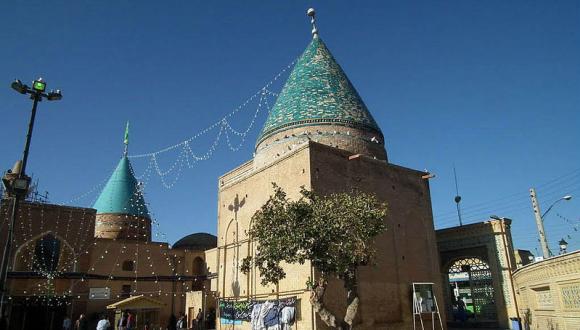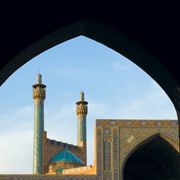Sufis, Social Networks and the Struggle for Religious Freedom in Iran
Social Networks in the Struggle of Sufi Dervishes against the Regime in the Islamic Republic of Iran
by Raz Zimmt
Beehive: Middle East Social Media - Vol. 2, No. 3, March 2014, Moshe Dayan Center for Middle Eastern and African Studies
 In recent years, Iranian authorities have stepped up their struggle against Sufi Muslim mystical orders,[i] particularly that of the Nematollahi-Gonabadi, which is considered the largest order with approximately two million adherents among Shiʿi Muslims. Repressive actions by state authorities against members of the order include, but are not limited to: summoning members for interrogation, arrests, restrictions on educational activities and centers associated with the order, including police raids, pressure on workplaces to dismiss adherents, and the blocking of websites used by the order. The intensified confrontation between the regime and members of the Sufi orders (dervishes) in Iran recently led them to expand their struggle into the online arena.
In recent years, Iranian authorities have stepped up their struggle against Sufi Muslim mystical orders,[i] particularly that of the Nematollahi-Gonabadi, which is considered the largest order with approximately two million adherents among Shiʿi Muslims. Repressive actions by state authorities against members of the order include, but are not limited to: summoning members for interrogation, arrests, restrictions on educational activities and centers associated with the order, including police raids, pressure on workplaces to dismiss adherents, and the blocking of websites used by the order. The intensified confrontation between the regime and members of the Sufi orders (dervishes) in Iran recently led them to expand their struggle into the online arena.
Suppressing the activity of certain Sufi orders, is one example of a comprehensive campaign conducted by the regime to control the country’s religious life by suppressing all popular Islamic streams that promote alternative forms of religious expression, including messianic Shiʿa movements. Popular interpretations of Islam, which challenge the orthodox religious establishment and its exclusive, official interpretation by undermining the “rule of the religious jurisprudent” as practiced in the Islamic Republic since 1979, is a significant theological, ideological, and political threat to the regime.[ii]
In recent weeks, the confrontation between the authorities and the Sufi orders was reignited after a dervish of the Nematollahi-Gonabadi Order, who is imprisoned in Tehran’s Evin prison, began a hunger strike to protest the denial of medical treatment to other imprisoned members of the order. Another eight members, held in four prisons around Iran, soon joined the strike. In a letter sent to Ali Younesi, President Rouhani’s advisor for religious and ethnic minorities, the hunger strikers demanded an end to oppression of the dervishes, and to the discrimination practiced against them by the authorities.[iii] Following the hunger strike, thousands of Sufis in Iran and abroad launched an extensive publicity campaign, culminating in protest marches held on the 8th and 9th of March in front of the prosecutor’s office in Tehran (pictured).
The Sufis' struggle against the authorities has been completely ignored in Iranian media, except for several websites affiliated with the reformist opposition that operate outside Iran. This is not the first time that the establishment media in Iran has disregarded Sufi protests. For example, it almost completely ignored the long hunger strike several members of the order conducted in Adel Abad prison in Shiraz last year (March 2013), to protest the conditions under which dervishes and their attorneys were being held in Evin prison. In February 2014, the persistent neglect caused Sufis to demand that President Rouhani put an end to “news blackout” the media had imposed on their cause.[iv] In any case, the absence of traditional media coverage of their struggle means that social networks (SNS) have become the main platform for transmitting the Sufis’ messages and protest.

Pictured: Iranian President Hassan Rouhani. Credit: Wikimedia Commons
Since early March 2014, members of Nematollahi-Gonabadi, human rights activists and activists in the reformist opposition have used Facebook pages and Twitter accounts to report the Sufi hunger strikers’ struggle. In the days preceding the protest rally in Tehran, SNS were the main means for recruiting protesters and supporters. Regular updates about the protest activities were shared by hundreds of people on SNS. During the violent clashes that erupted between the protesting Sufis and security forces, SNS became the nearly exclusive source for transmitting regular updates about events in Tehran. Facebook pages affiliated with the Sufi website Majzooban Noor (literally, “drawn to the light”) were a key source of information about events near the public prosecutor’s office in Tehran, especially when the site itself was down for several hours, probably as a result of activity directed by the authorities.[v]
Surfers posted real-time images and reports about clashes between demonstrators and security forces. During these clashes, over two hundred members of the Sufi order, including several dozen women, were arrested. Throughout the two days of protest marches, personal testimonies were uploaded by participating human rights activists, including Sedigheh Khalili, the wife of Hamid Reza Moradi, a jailed dervish lawyer, and Reza Khandan, the husband of attorney Nasrin Sotoudeh, a human rights activist, who was released in September 2013 after serving three years as political prisoner in Evin prison. Khandan and Khalili testified about the security forces’ brutal treatment of protesters, which included the use of tear gas and batons, pulling demonstrators’ hair, and beatings.[vi]
In their comments on SNS, users strongly criticized the continuing violations of rights of Sufi dervishes, and demanded that President Rouhani fulfill his election promise to halt discrimination against religious minorities and religious groups in the Islamic Republic. In a response on the Facebook page of BBC news in Farsi, one surfer wrote that the Sufis are considered a religious minority in Iran and infringement of their rights must not be allowed, stating that, “I am not a dervish, I am not a Sunni Muslim, neither a Christian nor a Jew, but as a human being, I must be attentive to the pain of my fellow-citizens, at least on Facebook.”
In short, while the Islamic regime is working to impose its exclusive interpretation of Islam and preserve the status of its official clergy, the Sufi orders continue to function openly, thus expressing clear defiance of the theological and political authorities. The activism of members of the Nematollahi-Gonabadi Order on SNS has contributed greatly to raising awareness and garnering public support for their struggle, thereby strengthening, even slightly, their position against the regime. It can be assumed that SNS will continue to function as the principle publicity tool of Iranian Sufis in the future, helping them to offer a religious and political alternative to the existing religious establishment.
Dr. Ran Zimmt is a researcher at TAU's Alliance Center for Iranian Studies.
[i] Sufis can be described broadly as Muslim mystics seeking to reach a state of consciousness and knowledge of divinity.
[ii] For an article discussing the attitude of the Iranian regime to popular Islam, see Raz Zimmt, “Islam in the Islamic Republic: The Regime’s Struggle to Maintain its Monopoly over Religious Life", (Iran Pulse 13, July 19, 2007) http://humanities.tau.ac.il/iranian/en/previous-reviews/10-iran-pulse-en/114-13
[iv] http://www.majzooban.org/fa/exclusive/exclusive-news/8431-نامهی-دراویش-زندانی-به-روحانی-«-اگر-غم-آسیب-زوال-دارید،-ستم-بر-درویشان-را-پایان-دهید».html.
[v]https://www.facebook.com/photo.php?fbid=10152246995753954&set=a.76709008953.72388.75638168953&type=1; https://www.facebook.com/majzooban.org, March 11, 2014
[vi] https://www.facebook.com/bbcpersian, March 7, 2014






